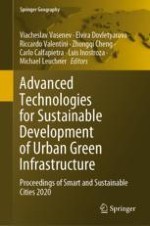2021 | OriginalPaper | Chapter
Assessment of Soil Heavy Metal Pollution by Land Use Zones in Small Towns of the Industrialized Arctic Region, Russia
Authors : Natalya Saltan, Marina Slukovskaya, Irina Mikhaylova, Evgeny Zarov, Pavel Skripnikov, Sergey Gorbov, Alexandra Khvostova, Svetlana Drogobuzhskaya, Anna Shirokaya, Irina Kremenetskaya
Published in: Advanced Technologies for Sustainable Development of Urban Green Infrastructure
Publisher: Springer International Publishing
Activate our intelligent search to find suitable subject content or patents.
Select sections of text to find matching patents with Artificial Intelligence. powered by
Select sections of text to find additional relevant content using AI-assisted search. powered by
